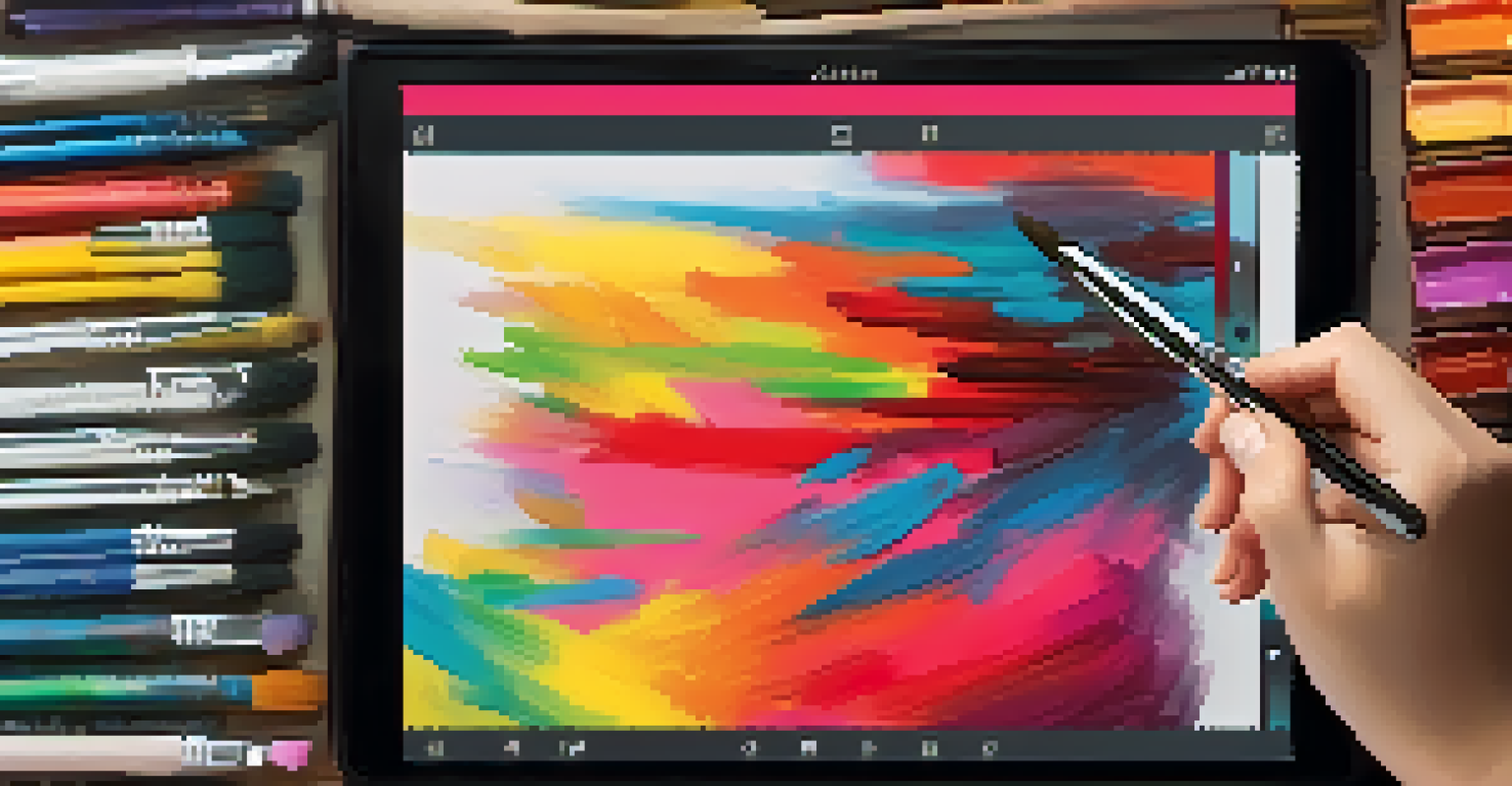The Role of Technology in Ethical Art Reproduction Practices

Understanding Ethical Art Reproduction Practices
Ethical art reproduction practices are essential for respecting artists' rights while making art accessible to the public. At their core, these practices ensure that original creators receive recognition and compensation for their work. This concept becomes particularly important in a digital age where reproducing art has never been easier, but so has the potential for misuse.
The great enemy of clear language is insincerity. When there is a gap between one's real and one's declared aims, one turns, as it were, to a euphemism to defend the gap.
For example, consider a photographer whose images are shared online without permission. This not only infringes on their rights but also diminishes the value of their work. Thus, the need for clear ethical guidelines in art reproduction is paramount, balancing accessibility with respect for the artist's original vision.
With technology advancing rapidly, ethical practices must evolve to keep pace. Digital tools and platforms can facilitate the fair distribution of art while ensuring that artists maintain control over their creations. This harmony between technology and ethics is essential for a thriving creative community.
The Role of Digital Tools in Art Reproduction
Digital tools play a crucial role in the reproduction and distribution of art. Software for image editing, scanning, and printing allows artists to create high-quality reproductions of their work while retaining their unique style. This technology enables artists to share their creations with a broader audience, enhancing their visibility and reach.

Moreover, these tools can help in maintaining the integrity of the artwork. For instance, digital watermarking can protect an artist’s work from unauthorized use. This not only safeguards the artist's rights but also helps collectors and galleries verify the authenticity of a piece.
Ethics in Art Reproduction Matters
Respecting artists' rights through ethical reproduction practices is crucial in a digital age where unauthorized sharing is rampant.
As artists embrace these digital solutions, they can navigate the complexities of reproduction with greater ease. By utilizing technology thoughtfully, artists can ensure their work is shared ethically and responsibly, paving the way for new opportunities in the art world.
How Blockchain is Transforming Art Ownership
Blockchain technology is revolutionizing how art ownership is established and maintained. By creating a decentralized ledger that records transactions, blockchain provides transparency in art sales and transfers. This transparency can help combat issues of forgery and misattribution, which have plagued the art world for decades.
Art is not what you see, but what you make others see.
For instance, when an artwork is sold, the transaction is securely recorded on the blockchain, ensuring that both the seller and buyer can verify ownership history. This level of trust is crucial, especially in high-value art transactions where authenticity is paramount.
Additionally, blockchain can enable artists to receive royalties from future sales of their work, creating a sustainable income source. This shift not only empowers artists but also aligns with ethical practices by ensuring that creators continue to benefit from their labor.
3D Printing: Redefining Art Reproduction Standards
3D printing technology is setting new standards for art reproduction by allowing for the creation of physical replicas with astonishing accuracy. Artists can produce three-dimensional copies of their original works, giving collectors and enthusiasts a chance to own a piece of art without compromising the integrity of the original. This technology opens doors to new forms of artistic expression and accessibility.
Imagine being able to hold a sculptor's work in your hands, perfectly mimicking the original's texture and detail. This not only democratizes access to art but also allows for educational opportunities, as students and aspiring artists can study these reproductions up close.
Digital Tools Enhance Art Sharing
Advancements in digital tools empower artists to create high-quality reproductions while maintaining control over their work.
However, the ethical considerations surrounding 3D printing are significant. It is essential for artists to communicate how their work can be reproduced and to what extent. By establishing clear guidelines, artists can leverage this technology while maintaining control over their creative output.
The Impact of Social Media on Art Reproduction Ethics
Social media has transformed how art is shared and consumed, creating a double-edged sword for ethical reproduction. On one hand, platforms like Instagram and Pinterest allow artists to display their work to global audiences. On the other hand, these platforms can also facilitate unauthorized sharing and reproduction of art without proper credit or compensation.
Think about the viral nature of an art post; it can spread like wildfire, reaching millions in a matter of hours. However, if the original artist doesn't receive acknowledgment or compensation, it can lead to a sense of exploitation. Thus, it's vital for both artists and audiences to understand the importance of giving credit where it’s due.
To navigate this landscape, artists can utilize social media strategically, using it as a tool for promotion while advocating for their rights. By fostering a culture of respect and recognition, the art community can thrive in the digital age.
The Importance of Licensing in Art Reproductions
Licensing plays a pivotal role in ensuring that art reproductions are handled ethically. By obtaining a license, individuals and organizations can legally reproduce an artist's work while respecting their rights. This not only protects the artist but also provides clear guidelines for how their work can be used.
For instance, a gallery that wishes to display reproductions of an artist's work must secure the appropriate licenses to do so. This process not only formalizes the relationship between the artist and the reproducer but also fosters mutual respect and understanding.
Blockchain Supports Art Ownership
Blockchain technology offers transparency in art transactions, ensuring secure ownership and potential royalties for artists.
In an era where unauthorized reproductions are rampant, licensing offers a safeguard for artists. By educating both creators and consumers about the importance of licensing, we can promote a more ethical approach to art reproduction.
Future Trends in Ethical Art Reproduction Practices
Looking ahead, the intersection of technology and ethics in art reproduction is bound to evolve further. As new technologies emerge, artists and organizations will need to adapt their practices to ensure they remain ethical and respectful. This ongoing dialogue between technology and ethics is essential for creating a sustainable art ecosystem.
For instance, augmented reality (AR) and virtual reality (VR) are beginning to change how art is experienced and reproduced. These technologies offer immersive ways to engage with art, but they also raise questions about ownership and reproduction rights. Navigating these challenges will require collaboration among artists, technologists, and policymakers.

Ultimately, the future of ethical art reproduction will depend on a collective commitment to respect, transparency, and innovation. By embracing these values, the art community can thrive in an increasingly digital world while honoring the contributions of its creators.